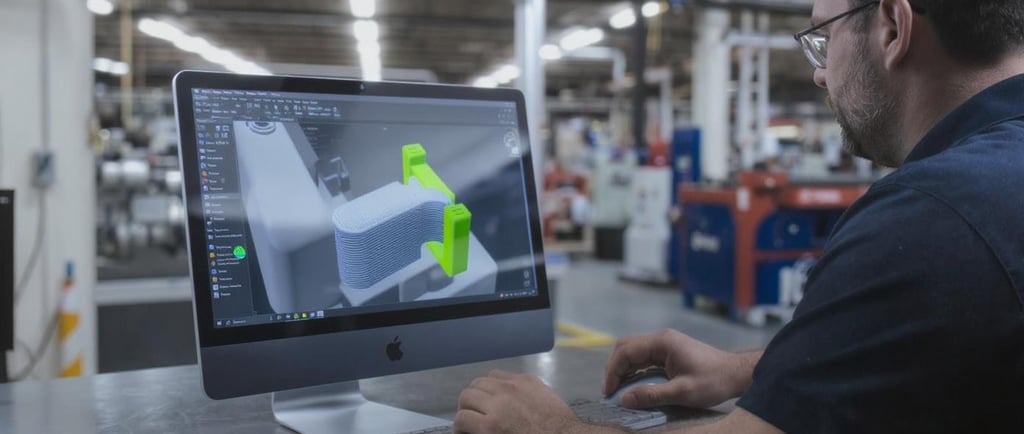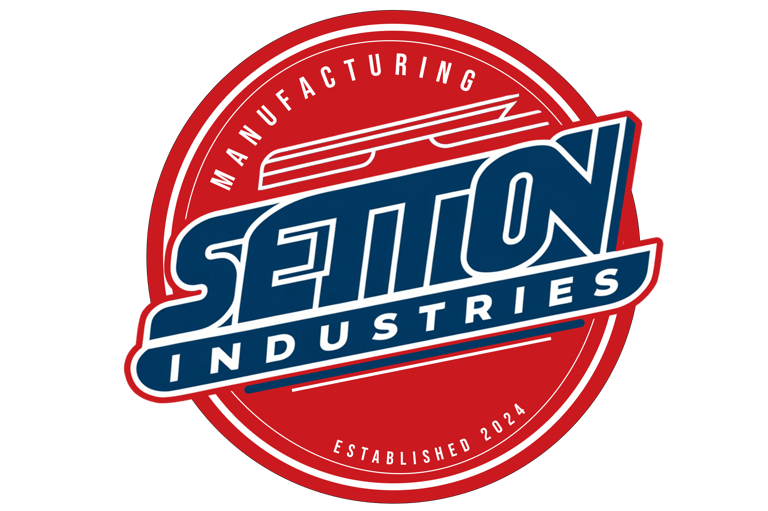Optimizing Manufacturing with 3D Modeling Best Practices
7/1/2025


Why 3D Modeling Matters Across the Manufacturing Lifecycle
3D modeling creates detailed digital representations of products, enabling manufacturers to visualize, simulate, and refine designs before, during, and after production. This technology reduces costs, accelerates timelines, and enhances quality across industries like automotive, aerospace, and consumer goods. By integrating 3D modeling into all phases—design, production, testing, and problem resolution—you can unlock its full potential.
Below, we outline three critical best practices for effective 3D modeling, followed by insights into how it supports each phase of manufacturing.
1. Prioritize Model Accuracy and Detail
Accurate 3D models are the backbone of successful manufacturing. Inaccurate models can lead to errors that ripple through production and testing, costing time and money. To ensure precision:
Use High-Quality Reference Data: Start with verified 2D drawings or CAD files. Collaborate with engineering teams to confirm measurements and specifications.
Incorporate Material Properties: Embed realistic material data (e.g., weight, strength, thermal resistance) to simulate performance in production and testing environments.
Regularly Validate Models: Cross-check models against physical prototypes or existing components to maintain accuracy across all phases.
Accurate models streamline design, ensure production-ready components, and provide reliable data for testing and troubleshooting.
2. Optimize for Collaboration
Manufacturing involves diverse teams—designers, production engineers, quality assurance, and more. 3D modeling fosters collaboration, ensuring alignment from design to problem resolution:
Standardize File Formats: Use universal formats like STEP or IGES for seamless sharing across design, production, and testing teams.
Leverage Cloud-Based Tools: Platforms like Autodesk Fusion 360 or Siemens NX enable real-time collaboration, allowing production teams to access models during setup and testing teams to review simulations.
Document Changes: Maintain a clear version history to track model iterations, ensuring production and testing teams work from the latest designs and can trace issues back to specific changes.
Effective collaboration ensures 3D models remain a single source of truth, reducing miscommunication and speeding up problem resolution.
3. Integrate Simulation and Testing
3D modeling’s simulation capabilities are critical not just in design but also in production and testing. By simulating real-world conditions, you can anticipate and resolve issues:
Run Stress Tests: Use finite element analysis (FEA) to evaluate component durability under production stresses or operational conditions.
Simulate Assembly Processes: Model production lines to optimize workflows, identify bottlenecks, or improve worker ergonomics.
Test Tolerances and Fit: Simulate part interactions to ensure precise fits during assembly, minimizing production errors and testing failures.
Simulation catches issues early, optimizes production setups, and ensures robust testing, reducing costly rework.
3D Modeling Across the Manufacturing Lifecycle
While 3D modeling is often associated with the design phase, its value extends far beyond. Here’s how it enhances each stage:
Design Phase
In the initial design phase, 3D modeling enables visualization and iteration. Designers can create detailed models, test concepts virtually, and refine designs before committing to physical prototypes. This early validation reduces costly revisions later.
Production Phase
During production, 3D models guide manufacturing processes. They provide precise specifications for CNC machines, robotic arms, or additive manufacturing systems, ensuring components are produced accurately. Models also help optimize production layouts by simulating assembly lines, reducing setup times and improving efficiency. For example, a 3D model can reveal ergonomic issues in a workstation setup, allowing adjustments before production begins.
Testing Phase
In the testing phase, 3D models support rigorous quality assurance. Simulations like FEA or thermal analysis predict how components will perform under stress, temperature, or wear, reducing the need for extensive physical testing. Models also enable virtual fit tests, ensuring parts align correctly before final assembly. This minimizes testing failures and accelerates time-to-market.
Problem Resolution Phase
When issues arise—whether in production or post-market—3D modeling aids rapid problem resolution. By analyzing the original model, teams can pinpoint design flaws, simulate corrective measures, and test solutions virtually. For instance, if a component fails during testing, engineers can modify the model, re-run simulations, and deploy fixes without halting production. This iterative approach saves time and resources while maintaining product quality.
Real-World Impact
At Setton Industries, we’ve seen 3D modeling transform manufacturing across all phases. One client, a mid-sized aerospace component manufacturer, used our guidance to integrate 3D modeling throughout their process. By implementing cloud-based collaboration and advanced simulations, they reduced design-to-production time by 35%, cut testing costs by 20%, and resolved a critical production issue in half the expected time. These results highlight the power of 3D modeling when applied holistically.
Get Started with Setton Industries
Ready to harness 3D modeling to optimize your entire manufacturing process? Setton Industries offers tailored consulting to integrate this technology effectively, from design to problem resolution. Our 25 years of experience ensure solutions that meet your unique needs, whether you’re adopting 3D modeling for the first time or refining existing workflows.
Let’s build a more efficient, innovative future for your manufacturing business.
© 2025. All rights reserved.


CAGE/NCAGE #: 115Y9 | UEI: JJPTJMGHH2S5 | D-U-N-S #: 12-912-5897 | NAICS CODES: 541330, 541690
